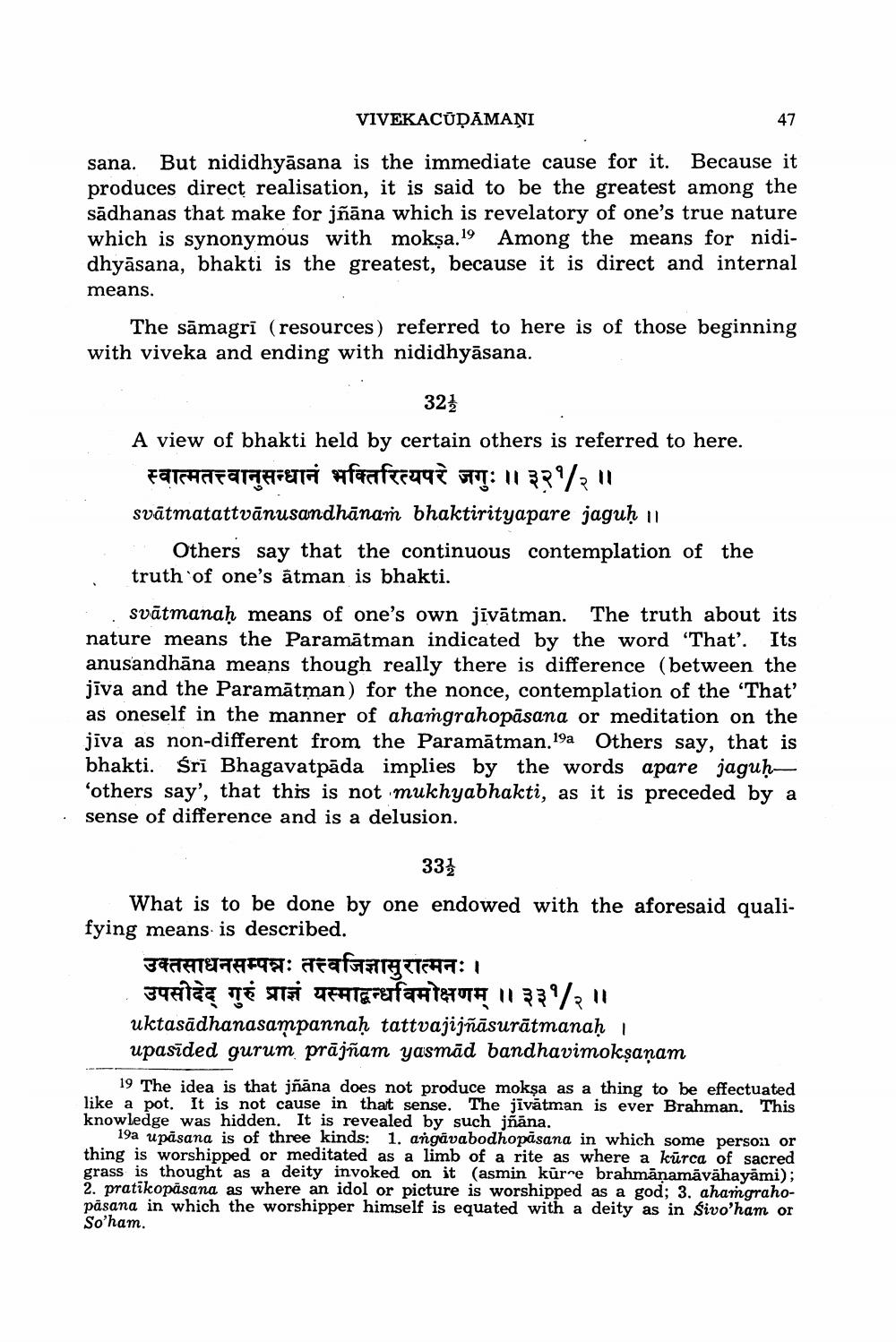________________
VIVEKACŪDAMAŅI
47
sana. But nididhyāsana is the immediate cause for it. Because it produces direct realisation, it is said to be the greatest among the sādhanas that make for jñāna which is revelatory of one's true nature which is synonymous with mokşa. 19 Among the means for nididhyāsana, bhakti is the greatest, because it is direct and internal means.
The sāmagri (resources) referred to here is of those beginning with viveka and ending with nididhyāsana.
323 A view of bhakti held by certain others is referred to here.
स्वात्मतत्त्वानुसन्धानं भक्तिरित्यपरे जगुः ॥३२१/२ ॥ svātmatattvānusandhānam bhaktirityapare jaguḥ 11.
Others say that the continuous contemplation of the truth of one's ātman is bhakti.
svātmanaḥ means of one's own jīvātman. The truth about its nature means the Paramātman indicated by the word 'That'. Its anusandhāna means though really there is difference (between th jīva and the Paramātman) for the nonce, contemplation of the 'That' as oneself in the manner of ahamgrahopasana or meditation on the jiva as non-different from the Paramātman.19a Others say, that is bhakti. Śrī Bhagavatpāda implies by the words apare jaguh'others say', that this is not mukhyabhakti, as it is preceded by a sense of difference and is a delusion.
331 What is to be done by one endowed with the aforesaid qualifying means is described.
उक्तसाधनसम्पन्नः तत्त्वजिज्ञासुरात्मनः।
उपसोदेद् गुरुं प्राज्ञं यस्माद्बन्धविमोक्षणम् ॥३३१/२ ॥ uktasādhanasampannaḥ tattvajijñāsurātmanaḥ upasīded gurum prājñam yasmād bandhavimokşanam
19 The idea is that jñāna does not produce mokşa as a thing to be effectuated like a pot. It is not cause in that sense. The jivātman is ever Brahman. This knowledge was hidden. It is revealed by such jñāna.
19a upasana is of three kinds: 1. angāvabodhopāsana in which some person or thing is worshipped or meditated as a limb of a rite as where a kūrca of sacred grass is thought as a deity invoked on it (asmin kūrne brahmānamāvähayāmi); 2. pratikopäsana as where an idol or picture is worshipped as a god; 3. ahamgrahopasana in which the worshipper himself is equated with a deity as in Sivo'ham or So'ham.




